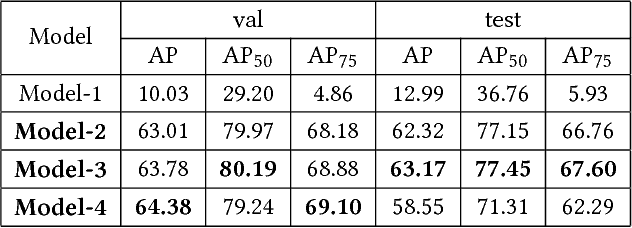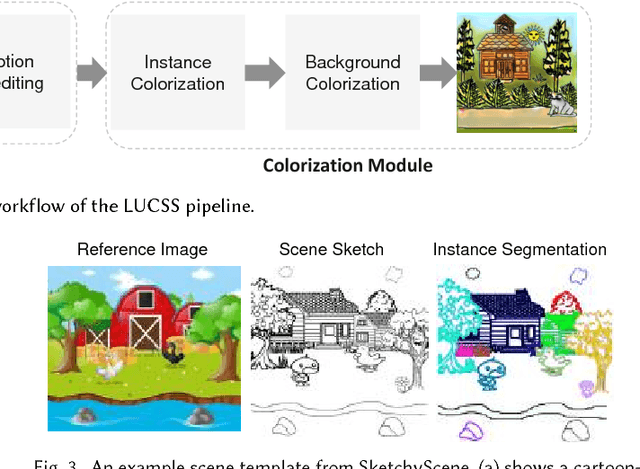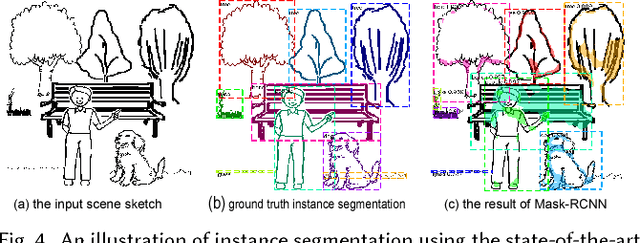Haoran Mo
LUCSS: Language-based User-customized Colourization of Scene Sketches
Aug 30, 2018



Abstract:We introduce LUCSS, a language-based system for interactive col- orization of scene sketches, based on their semantic understanding. LUCSS is built upon deep neural networks trained via a large-scale repository of scene sketches and cartoon-style color images with text descriptions. It con- sists of three sequential modules. First, given a scene sketch, the segmenta- tion module automatically partitions an input sketch into individual object instances. Next, the captioning module generates the text description with spatial relationships based on the instance-level segmentation results. Fi- nally, the interactive colorization module allows users to edit the caption and produce colored images based on the altered caption. Our experiments show the effectiveness of our approach and the desirability of its compo- nents to alternative choices.
SketchyScene: Richly-Annotated Scene Sketches
Aug 07, 2018



Abstract:We contribute the first large-scale dataset of scene sketches, SketchyScene, with the goal of advancing research on sketch understanding at both the object and scene level. The dataset is created through a novel and carefully designed crowdsourcing pipeline, enabling users to efficiently generate large quantities of realistic and diverse scene sketches. SketchyScene contains more than 29,000 scene-level sketches, 7,000+ pairs of scene templates and photos, and 11,000+ object sketches. All objects in the scene sketches have ground-truth semantic and instance masks. The dataset is also highly scalable and extensible, easily allowing augmenting and/or changing scene composition. We demonstrate the potential impact of SketchyScene by training new computational models for semantic segmentation of scene sketches and showing how the new dataset enables several applications including image retrieval, sketch colorization, editing, and captioning, etc. The dataset and code can be found at https://github.com/SketchyScene/SketchyScene.
 Add to Chrome
Add to Chrome Add to Firefox
Add to Firefox Add to Edge
Add to Edge